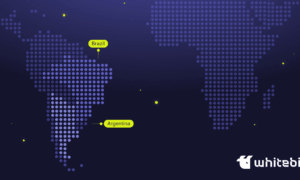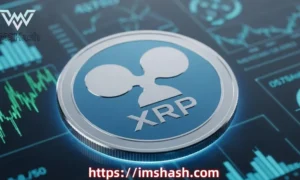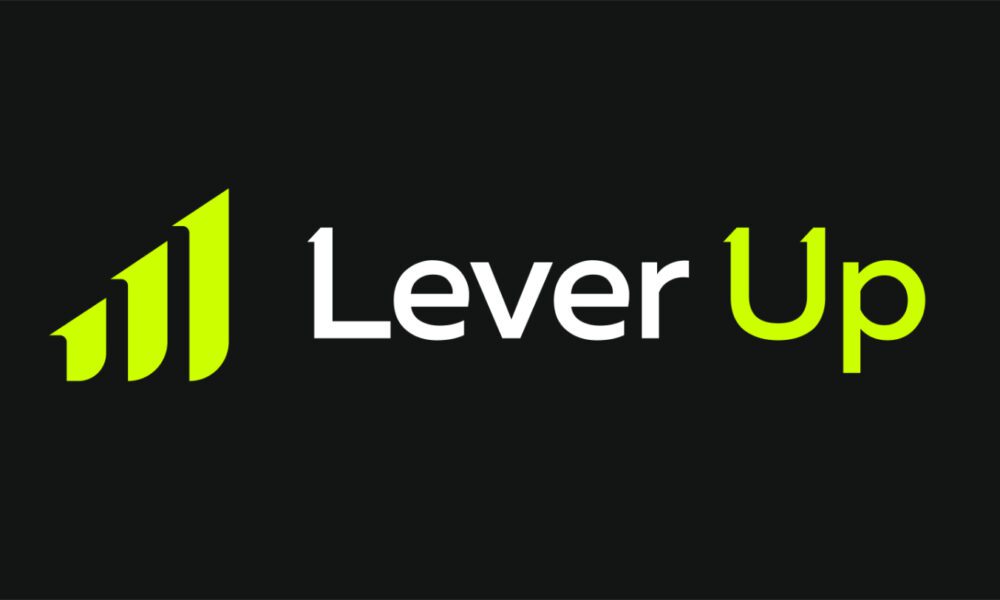1) The Macro Backdrop: Slower Global Growth, Gradual Regional Re-acceleration
Global growth in 2025 is moderating relative to 2024, reflecting tighter financial conditions and slower advanced economies. Yet regional momentum is gradually improving as oil supply normalizes and non-oil sectors in the Gulf remain robust, while reform programs progress in economies like Egypt. The high-level picture: the Middle East & North Africa (MENA) is expected to expand faster than last year, but with risks tilted to the downside (geopolitics, shipping disruptions, and volatile commodity prices).
At a glance
- Regional growth improving versus 2024, aided by stronger Gulf activity and selective reform progress.
- Non-oil engines—trade, logistics, finance, tourism, real estate—are increasingly central to outlooks in the UAE, Saudi Arabia, and Qatar.
- Israel’s high-tech sector remains a major regional outlier in innovation intensity and export composition.
2) The Gulf Powerhouses: Scale, Liquidity, and Diversification
Saudi Arabia: The region’s largest economy, with nominal GDP around the trillion-dollar mark, is advancing its Vision 2030 agenda while calibrating oil output under OPEC+ agreements. The Public Investment Fund (PIF) has become a global investor with near-trillion-dollar assets under management, channeling capital into giga-projects (NEOM, the Red Sea, Diriyah) and strategic sectors (renewables, logistics, advanced manufacturing, sports). Aramco remains a profit engine even amid oil price softness, continuing to fund dividends and capex while preserving low gearing.
United Arab Emirates (UAE): The UAE’s economic model is a regional benchmark for diversification. Non-oil activity—spanning trade, aviation, logistics, finance, tourism, technology, and real estate—now contributes the lion’s share of GDP. Goods trade has surged, supported by re-exports and resilient consumer demand. Growth prospects for 2025–2026 look solid as both oil and non-oil sectors expand.
Qatar: Qatar’s LNG strategy is reshaping global gas markets. The North Field expansion underpins LNG capacity growth over the medium term and informs the investment horizon of the Qatar Investment Authority (QIA). Fleet orders and long-term offtake contracts support visibility into export revenues and fiscal buffers.
Selected 2025 Indicators (Illustrative)
- Saudi Arabia: Nominal GDP ≈ $1.27T; real growth projected to recover as oil output normalizes; inflation subdued.
- UAE: Growth driven by non-oil sectors; non-oil trade surpassing multi-trillion AED levels; tourism and real estate buoyant.
- Qatar: LNG capacity set to rise with North Field expansion; sovereign wealth firepower positions the state for counter-cyclical investment.
What to watch
- OPEC+ policy and oil price path—key for hydrocarbon revenues and public capex.
- Execution on giga-projects (KSA) and infrastructure/industrial expansion (UAE, Qatar).
- Global LNG market balance as new supply enters from Qatar and elsewhere.
3) Israel: A High-Tech Economy with Deep Capital Links
Israel is the region’s standout knowledge economy. High-tech now accounts for roughly one-fifth of GDP and a majority of exports, with specializations in software, cybersecurity, fintech, semiconductors, and AI. Despite the 2023–2024 shocks to activity and the short-term hit to growth, the medium-term foundation—human capital, R&D intensity, global venture connectivity, and multinational presence—remains intact.
Macro stabilizers include a credible central bank and deep financial markets. Inflation has been easing into the target band, and growth is projected to re-accelerate through 2026 as reconstruction spending, investment pipelines, and export demand gradually normalize.
Israel’s economic “flywheel”
- Talent density: high tertiary education attainment, military-tech spillovers, and strong STEM pipeline.
- Capital access: global VC networks, NASDAQ listings, and corporate R&D centers create multiple financing routes.
- Export engine: a tech-heavy export basket provides value-added growth less tied to oil cycles.
- Regional opportunity: trade normalization with Gulf partners (e.g., UAE) expanding markets, logistics routes, and co-investment.
4) Non-Oil Growth Engines: Trade, Logistics, Tourism & Real Estate
The Middle East is consolidating its role as a hub between Asia, Africa, and Europe. Ports (Jebel Ali, Hamad, King Abdullah), carriers (Emirates, Qatar Airways, Saudia), and free-zone regimes have stitched together cross-border value chains that support re-exports, manufacturing, and services. Tourism has roared back—anchored by mega-events, culture/sports, and high-end hospitality—while real estate in Gulf cities remains a preferred asset for regional and international investors seeking dollar-linked returns, modern infrastructure, and tax efficiency.
Looking to navigate the financial aspects of cross-border operations or investments? For tax, accounting, and corporate finance considerations relevant to businesses that operate between Israel and the wider region, see Costa-CPA. For hospitality and property insights specific to Tel Aviv and its neighborhoods, including high-yield short-term rentals, explore MyGuestTLV.
5) Capital and Sovereign Wealth: Firepower for Transformation
GCC sovereign wealth funds are among the world’s most active allocators. Saudi Arabia’s PIF, Abu Dhabi’s ADIA/ADQ/Mubadala, and Qatar’s QIA are deploying capital into domestic transformation (renewables, green hydrogen, tourism, advanced manufacturing), regional integration (ports, power interconnectors), and global strategic stakes (technology, infrastructure, energy transition). This capital depth provides a buffer in downcycles and accelerates diversification in upcycles.
On the corporate side, national champions—Aramco in oil, SABIC in chemicals, ADNOC in energy/logistics, Emirates and Qatar Airways in aviation—continue to globalize supply chains and anchor industrial ecosystems at home. Dividend streams from energy companies also help fund public investment while supporting household incomes through confidence channels.
6) Egypt, Türkiye, and the Wider Neighborhood
Egypt: After years of external imbalances, Egypt is executing an IMF-backed reform program that includes currency flexibility, privatization, and fiscal consolidation. The combination of multilateral support and Gulf investment has eased immediate financing pressures, though sustained reform delivery—particularly around state-owned enterprise roles and competition—will determine medium-term growth and inflation outcomes.
Türkiye: Macroeconomic re-balancing—tight monetary policy, disinflation efforts, and steps to rebuild credibility—frames Türkiye’s 2025 outlook. With a large industrial base and strategic location, the economy’s trajectory will hinge on the pace of disinflation, external financing conditions, and export demand in Europe.
7) Sector Deep Dives
Energy & LNG
Oil remains a central driver of fiscal and external balances. Yet the medium-term story is increasingly about gas: Qatar’s multi-phase North Field expansion aims to maintain global leadership in LNG, with new supply ramping up later this decade. For importers across Europe and Asia, diversified LNG sources improve energy security; for Qatar, long-dated contracts anchor revenue visibility and sovereign investment capacity.
Technology
Israel’s innovation complex—startups, multinationals, defense-tech spillovers—continues to attract global capital. Even after a cyclical downturn in venture funding since 2022, the country’s share of global high-tech investment remains outsized relative to its small GDP share, reflecting deep specialization in cybersecurity, data infrastructure, and AI-enabled verticals. Across the Gulf, government-backed AI funds and data-center build-outs are creating regional digital platforms to complement Israel’s private-led model.
Real Estate
Residential and commercial real estate in the Gulf benefits from population growth, migration of skilled workers, and global capital inflows. In parallel, Israel’s urban cores (e.g., central Tel Aviv) exhibit tight supply and strong medium-term demand linked to tech employment and tourism. For investors and operators, yield profiles vary widely by submarket, regulation, and currency exposure—factors that require hands-on local expertise.
Practical notes for investors and operators
- Currency & rates: Track policy rates and inflation paths—especially in Israel—for valuation and debt-service assumptions.
- Permitting & planning: Real estate timelines and FAR rules differ significantly by city; partner with on-the-ground specialists.
- Tax and structuring: Cross-border holdings introduce withholding, VAT, and transfer-pricing questions—seek experienced regional accountants.
- Insurance & security: Factor geopolitical risk and business continuity into project models.
8) Regional Trade Links and the “Normalization Dividend”
Economic normalization between Israel and several Arab partners has produced growing trade, investment, and technology exchange, with the UAE emerging as the most significant counterpart. Logistics corridors, joint R&D, and services trade (finance, consulting, tourism) complement goods trade in electronics, diamonds, machinery, and chemicals. Over a multi-year horizon, deeper normalization could unlock larger benefits in energy interconnections, water/food security technologies, and digital trade frameworks.
9) Key Risks
- Geopolitics and security: Escalations can disrupt trade routes (e.g., Red Sea), deter tourism, and widen risk premia.
- Oil price volatility: Terms-of-trade swings affect fiscal balances, capex pipelines, and sovereign wealth fund inflows.
- Global financial conditions: A strong dollar and higher-for-longer rates tighten external financing for reforming economies.
- Execution risk: Megaproject timelines, regulatory clarity, and labor-market reforms will determine whether diversification targets are met.
10) Outlook: A Dual Engine—Hydrocarbon Scale + Innovation
The Middle East’s 2025 outlook is anchored by two durable engines. First, hydrocarbon scale—which still funds public investment, sovereign savings, and dividends—remains a stabilizer through cycles. Second, innovation ecosystems—Israel’s globally connected tech sector and the Gulf’s state-catalyzed digital build-out—are creating new drivers in AI, clean energy, and advanced manufacturing. Together, they are reshaping the region’s growth mix toward higher value-added services and knowledge-intensive industry.
Explore more: For corporate finance, international tax, and cross-border structuring tailored to Israel and the region, visit Costa-CPA. For on-the-ground insights into Tel Aviv real estate and hospitality operations, see MyGuestTLV.
Disclaimer: Figures and projections reflect the latest publicly available sources as of October 2025 and are subject to revision by statistical authorities and international institutions.



































